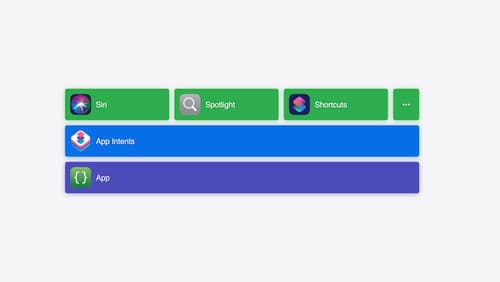How to make a light weight app?
Asked on 2024-07-31
1 search
To create a lightweight app, especially for platforms like visionOS, there are several key considerations and best practices you can follow:
-
Minimize Physical Movement: Ensure that your app requires minimal physical movement to keep users comfortable and safe. For example, in the session Design great visionOS apps, it is emphasized that apps should be designed to minimize the amount of physical movement required, as users will be wearing the Vision Pro device on their heads.
-
Optimize 3D Assets: Efficient use of texture memory, optimizing materials and shaders, and setting up a skydome are crucial. The session Optimize your 3D assets for spatial computing provides detailed guidance on these aspects. This helps in reducing the GPU workload and ensures smooth performance.
-
Ergonomic Design: Keep the interface cohesive and minimize the number of windows needed. This is discussed in the session Design great visionOS apps, where it is suggested to keep the UI contained within a window and avoid floating UI elements arbitrarily in the user's field of view.
-
Efficient Use of System Features: Utilize system features like App Intents to reduce the need for users to switch between apps frequently. This reduces friction and makes the app feel more integrated and lightweight. The session Bring your app’s core features to users with App Intents discusses how to elevate core features of your app to make them more accessible.
-
Cross-Platform Capabilities: Leverage cross-platform capabilities to ensure that your app can run efficiently on multiple devices without requiring significant changes. The session Discover RealityKit APIs for iOS, macOS and visionOS highlights how to build apps that can easily transition across different Apple platforms.
By following these guidelines, you can create a lightweight and efficient app that provides a seamless and comfortable user experience.

Optimize your 3D assets for spatial computing
Dive into an end-to-end workflow for optimized 3D asset creation. Discover best practices for optimizing meshes, materials, and textures in your digital content creation tool. Learn how to harness shader graph, baking, and material instances to enhance your 3D scene while optimizing performance. Take advantage of native tools to work more effectively with your assets and improve your app’s performance.

Bring your app’s core features to users with App Intents
Learn the principles of the App Intents framework, like intents, entities, and queries, and how you can harness them to expose your app’s most important functionality right where people need it most. Find out how to build deep integration between your app and the many system features built on top of App Intents, including Siri, controls and widgets, Apple Pencil, Shortcuts, the Action button, and more. Get tips on how to build your App Intents integrations efficiently to create the best experiences in every surface while still sharing code and core functionality.

What’s new in AppKit
Discover the latest advances in Mac app development. Get an overview of the new features in macOS Sequoia, and how to adopt them in your app. Explore new ways to integrate your existing code with SwiftUI. Learn about the improvements made to numerous AppKit controls, like toolbars, menus, text input, and more.
